New Zealand’s
GMV Moana Roa 1960 and the GMV Maui Pomare 1927 operating the Pacific &
Cook Islands
Please Note: Firefox and some other search engines are not suitable - Use “Internet Explorer” for this page to load perfectly!

Click
the logo above to reach the ssMaritime FrontPage for News Updates & “Ship
of the Month”
With
Reuben Goossens
Maritime
Historian, Cruise‘n’Ship Reviewer, Author & Maritime Lecturer
Please
Note: All ssMaritime and my other related
ssMaritime sites are 100% non-commercial and privately owned sites. Be assured that
I am NOT associated with any cruise or shipping companies or travel/cruise
agencies or any other organisations! The author has been in the passenger
shipping industry since May 1960 and is now semi-retired, but continues and I hope that the well over 600 Classic Liners and
Cargo-Passengers ships I have written on will continue to provide classic
ship enthusiasts and continue a great deal of information and pleasure!
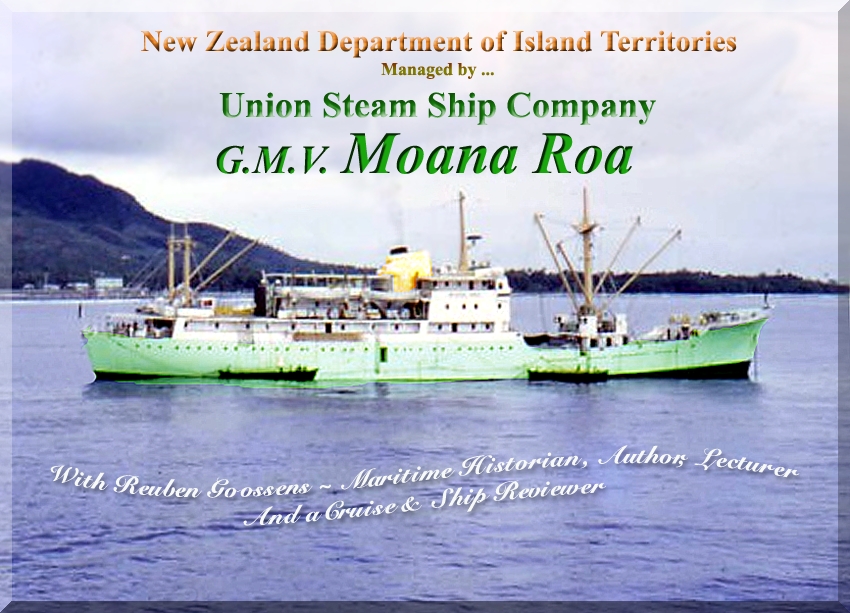
Please
Note: Photographs are from the Author’s collection, unless shown
otherwise
GMV Maui
Pomare:
As part of introduction to the GMV Moana
Roa we should realise that she was ordered as replacement for an earlier ship
that was built in 1927, named the GMV Maui Pomare. This little 1,211 GRT (Gross
Registered Tons) ship was built in Ireland for the New Zealand
Government by The Dublin Dockyard Company of North Wall, Dublin, a shipyard owned by Vickers (Ireland)
Ltd. As a Passenger-Cargo ship she was 219ft - 66.75m long. The GMV Maui Pomare
was launched on September 29, 1927 and she spent all of her days operating out
of Auckland
sailing between Norfolk Island, Niue, the Cook Islands
and Samoa.
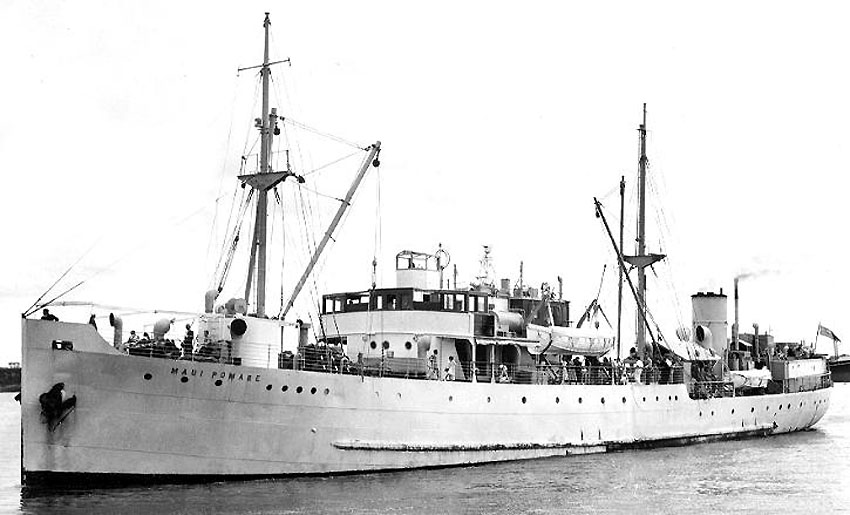
The
little GMV Maui Pomare is seen arriving in Port
She was managed by the
“Union Steam Ship Company” of New Zealand
on behalf of the Department of Island Territories until 1960, but her owners
were: “The Department of Island Territories of the New Zealand
Government.” She was originally fitted with “Petters”
diesel engines, however later by 1950 she was given new “Fairbanks
Morse” diesels engines that were made in 1941 giving her a modest service
speed of just 10 knots.
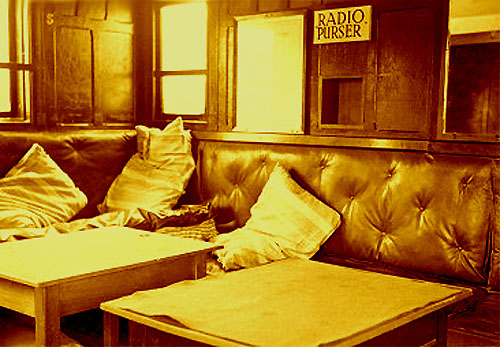 ---
---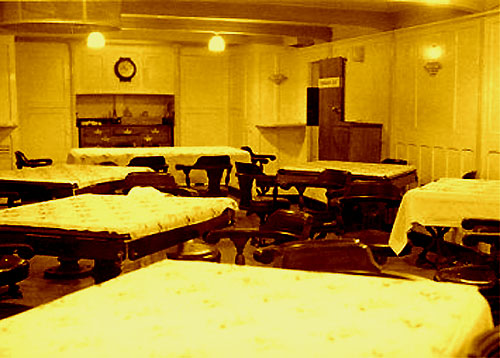
Left: The Smoke Room on A Deck - Right:
The interior Dining Room on Upper Deck
The Maui Pomare offered
accommodations for 30 passengers in two deluxe 2-berth Staterooms, eight
two-berth cabins and two six-berth cabins. She was
registered in Wellington New Zealand flying the New Zealand
flag. Her length was: 219ft - 66.75m a Beam of: 35.1ft - 10.7m and a Draught
of: 14ft - 4.3m.
GMV Maui
Pomare Deck Plan
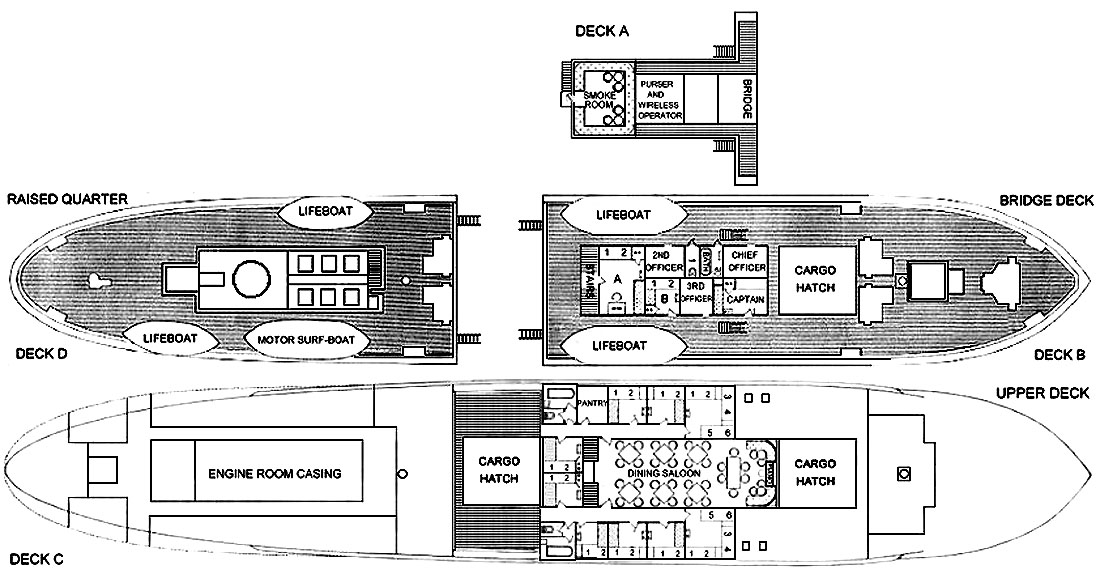
With the GMV Maui Pomare having served her
owners faithfully for a good 33 years, but now with the arrival of the brand
new GMV Moana Roa the company decided to lay her up when the new ship arrived
and place the Maui Pomare on the market.
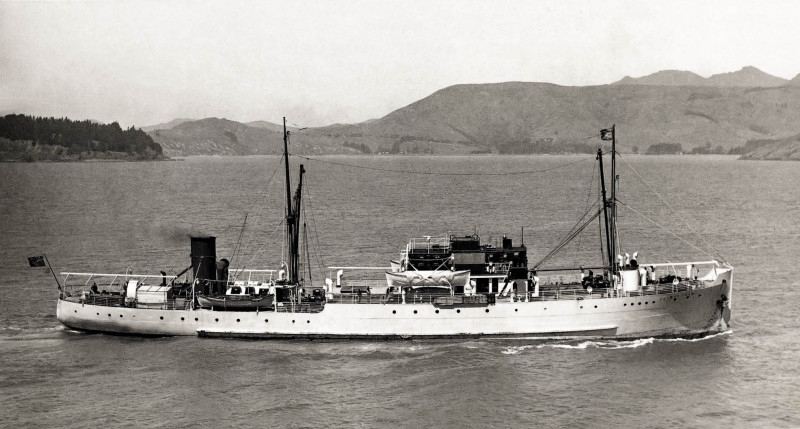
GMV
Maui Pomare is seen of the coast of New Zealand
In January 1961 she was purchased
by “Austral Pacific Steam Navigation Company,” however she was soon
resold to “Kimberley Shipping Company” of Port Kimberley in Western Australia.
She was registered at Panama
in 1961 and commenced to operate along the Western Australian coastline until
late in 1967. The Kimberley Shipping Company sold her in January 1968 to the
“Ming Hing Company” of Hong
Kong to be broken up and soon she headed to the
breakers yard there. It is said that by March 1968 demolition was already well
under way. After a total of 40 years of faithful service the little GMV Maui
Pomare was affine little ship!
GMV
Moana Roa:
The replacement passenger-cargo ship for the
GRV Maui Pomare was designed by Mr. H.D.M. Jones who was a well-known New
Zealand Naval Architect as well as a well known man for his many other
achievements in New Zealand.
When ready the “New Zealand Department
of Island Territories” being one of the Government departments of New Zealand
placed the order to build the new ship at a cost of £800,000 to
provide a superior passenger-cargo service. The ship was laid down at the
Grangemouth Dockyard Company Ltd on the Firth of Forth, Scotland, in yard 526 in 1960.
She was launched on April 14, 1960 and she was
officially named “Moana Roa” being a ship having a tonnage of 2,893
GRT or 2,276 DWT being just over twice the size than the retiring GMV Maui Pomare,
but the Moana Roa was certainly a far roomier vessel! Having been completed and
fully fitted our, she undertook her sea trails and did well giving her a top
speed of 15.12 knots, but her service speed was usually 14 knots.
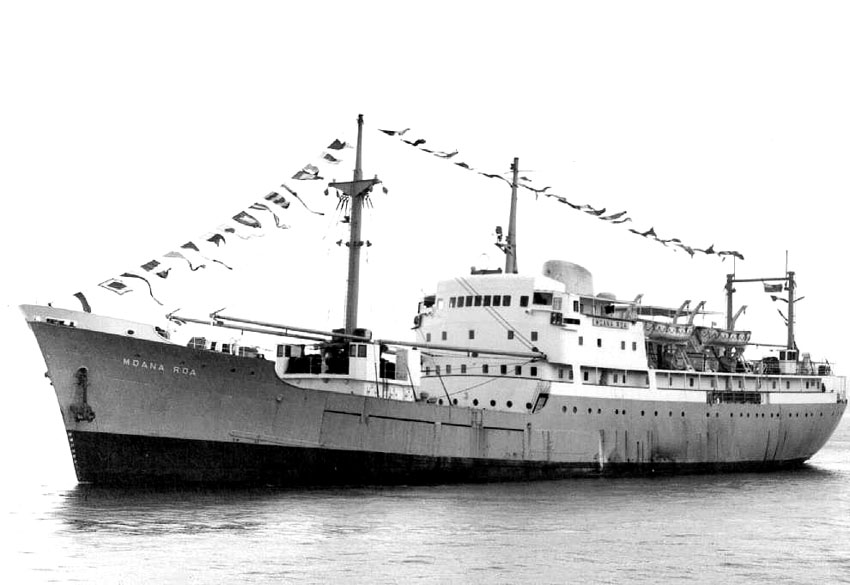
The GMV Moana Roa is seen fully dressed as
she arrives in Auckland for her
maiden arrival
Having been registered in
Auckland New Zealand and flying the New Zealand flag, on August
17, 1960, the green-hulled GMV Moana Roa departed Grangemouth for her delivery
voyage to her official homeport Auckland New Zealand. Having been fully supplied and made
ready she would enter service the previous ships operation between Auckland and the Cook Islands.
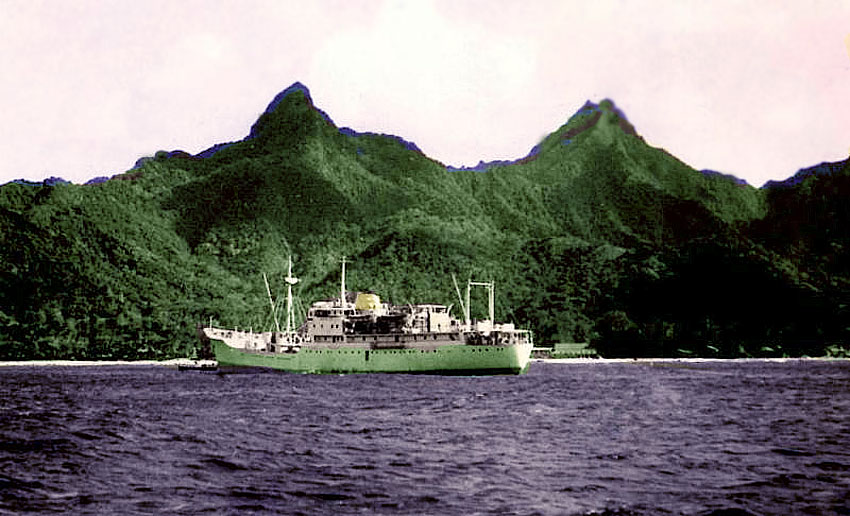
The delightful Moana Roa is seen here in the
beautiful Cook Islands
This is a colourised photograph,
based on the original photo taken by the excellent photographer Bill Johnson
Captain
John Hare, who had been the master of the GMV Maui Pomare, was given the
command of this fine new ship, and very soon she would be operating her regular
Passenger-Cargo as well as Mail services from Auckland via various Islands
ports, heading to the various Islands of the Cook Islands with the last port at
Avarua on the Island of Rarotonga being the main Island of the Cook Islands,
before her return voyage.
The Moana Roa offered accommodation for 40
First Class passengers. Her passenger’s cabins comprised of five cabins
up on Boat Deck there were four 2-berth cabins and one 4-berth cabin. On Bridge
Deck there were ten 2-berth cabins and two 4-berth cabins. Her accommodations
gave travellers the opportunity to travel the South Seas in far greater comfort than on
board the old Maui Pomare, yet the cabins did not offer any private facilities.
The cabins on Boat Deck were somewhat inboard of the
lifeboats which where on their gravity davits, but cabins on Bridge Deck, being
located one Deck down, offered views onto the port and the starboard alleyways.
Located at the forward end of the Bridge Deck
superstructure was the Lounge and Bar. The venue was
timber panelled, with the floors covered with the covering of choice of the
60s, “linoleum.” Furnishings offered were pleasant, with there
being several leather-covered settees with tables, but there were mostly groups
of four chairs around tables in the room. However the highlight of the venue
was without a doubt the delightful Bar that was built
into the aft wall. Obviously the Bar was a popular place especially when the
ship was in the tropics. The Dining Room was located directly below the Lounge
and the food on offer was good as was the service most respectable in every
way! The Moana Roa had three hols and all cargo space, save No. 1 ‘tween
deck was insulated!
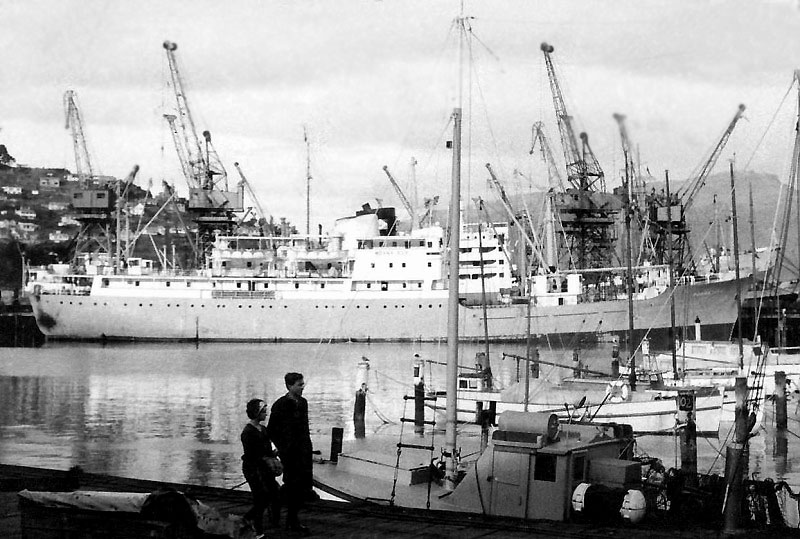
Here
we see the GMV in Lyttelton
in the South Island and the port for the City of Christchurch
Photographer
unknown – Please see Photo Notes at bottom of page
There was no doubt
that as the 1970s arrived slowly things commenced to change for slowly the
Moana Roa’s passenger numbers began to dwindle
as the growth of airliner services to the Pacific
Islands
commenced to increase and as fares of airfares dropped. The other factor for
all worldwide shipping was the price of fuel & oil quadrupled and also wages and maintenance costs also seemed to head
into skyward trajectories. Added to this, sadly there were also the
never-ending labour stoppages, for in 1972 Moana Roa was stuck for three and a
half months in the Calliope Dry Dock in Auckland,
the result of a dispute with the dockworkers’ union.
Finally, in August of 1972 the GMV Moana Roa
headed out to sea for a day with RNZN (Royal New Zealand Navy) officers on
board who were there in order to assess the ships suitability for conversion as
a survey ship. Planning and decision-making in this regard continued for
another long two years.
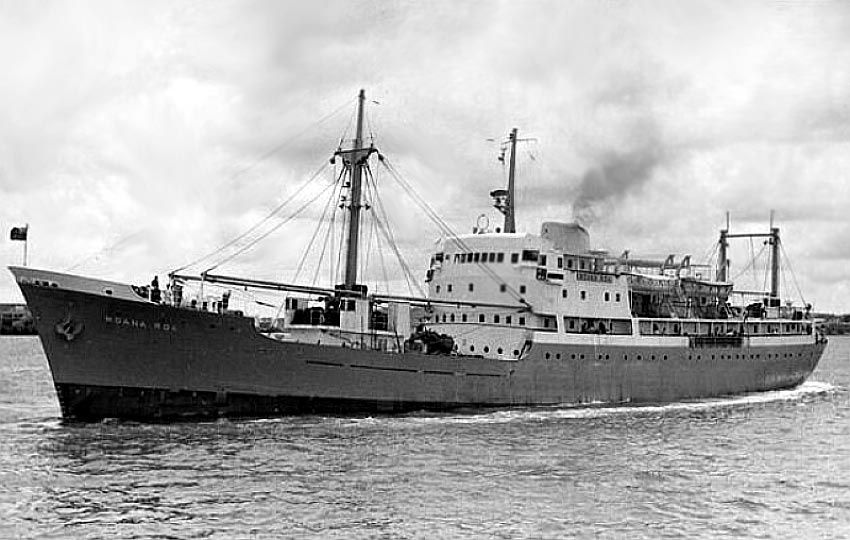
The delightful Moana Roa is seen off the coast of New Zealand
Prior to her
launching there had already been s a great deal of advance advertising
describing the Willem Ruys as being a worthy successor to the popular liners
the MS Dempo and the Baloeran, and without doubt she proved to be a great
success considering that she was one of the most luxurious ships on the service.
She returned to her regular services for the
next two years, but with passengers loadings decreasing and the need of mail
and cargo to the Islands slowing being transferred to the airlines, the need
for In August 1974 the GMV Moana Roa’s days as
a passenger-Cargo liner was about to come to an end, for on August 13, that
year she arrived and berthed in Auckland at the conclusion of what turned out
to be her very last commercial voyage ever. once her
passengers left the ship and she discharged her cargo, the delightful Moana Roa
was moved across Auckland harbour to
the “Devonport Naval Base,” where her career as a merchant ship
came to an end!
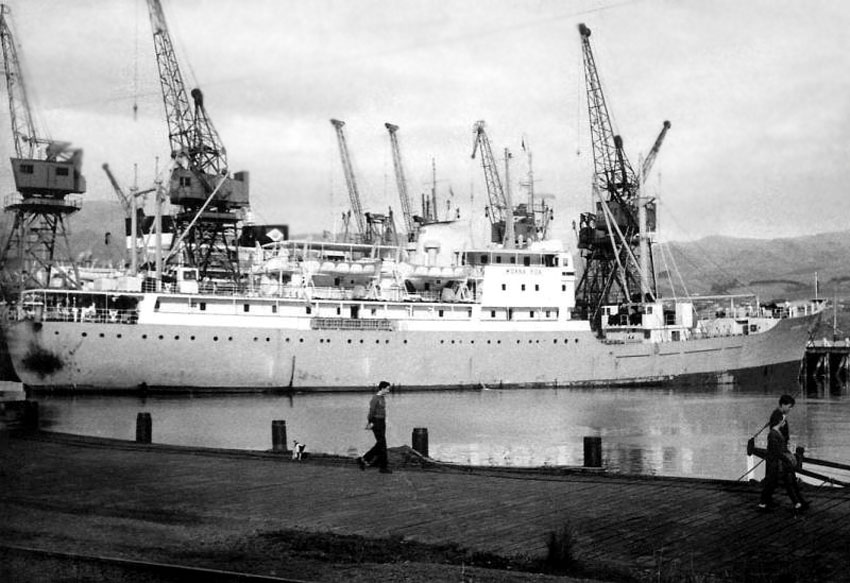
And
here is another photo of
her at Lyttelton
Photographer
unknown – Please see Photo Notes at bottom of page
GMV
Moana Roa Specifications:
Built at:……………………………Grangemouth
Dockyard Company Ltd on the Firth of Forth, Scotland,
1960.
Yard:……………………………….526.
Launched:……………………….April 14, 1960.
Official No:……………………..315021.
Tonnage:…………………………2,893
GRT, 2,276 DWT.
Length :…………………………..90.8m
- 297ft.
Beam:………………………….….14m
- 46ft.
Draught:………………….………5.2m
- 17ft.
Engines:………………………….Two 7-Cylinder two-stroke Clark Sulzer diesels, 3,090 BHP.
Propellers:………………………Two.
Speed:…………………………….Service
speed 14 Knots, trail top speed during her sea trails, 15.12 knots.
Range:…………………………….7,800 Nautical Miles.
Passengers:…………….………40.
Crew:……………………………..Unknown.
HMNZS
Monowai:
Late in 1974 the Moana Roa headed for Scotland
and the Scott Lithgow Shipyards where she received a comprehensive two-year
refit to transform her into a Hydrographic Survey
Ship complete with a helicopter platform far aft. Then
again in 1975 she was renamed the Monowai. The interiors and accommodations
were rearranged to suit her new working needs.

Artist impression
of the New Zealand Navy Survey Vessel HMNZS Monowai
Illustration by & © Murray Robinson
On October 4, 1977 she was
officially commissioned into the New Zealand Navy as the HMNZS Monowai, pennant
number AO6, with her new Call new Sign being: ZMFI. Although, she did not have
the standard naval grey livery, but being an all white ship with a yellow
funnel featuring the official emblem of New Zealand, the “Kiwi” its
famed native flightless Bird!
It was twelve months later when HMNZS Monowai
A06, was re-commissioned on 4 October, 1977. After one month of sea trials,
during which HMNZS Monowai was commanded by Captain J. Somerville. Then she
finally departed Greenock on November 7, 1977 bound for London and then London on December 1, 1977 she headed for her
homeport Auckland
in New Zealand.
She visited at Gibraltar,
Monaco,
Suez, Bombay, Singapore
as well as Cairns
Australia,
before she reached Auckland
on February 2, 1978 and she was finally ready to commence her second
incarnation of her working life.
HMNZS Monowai’s
first commanding Officer as a survey ship would be Commander W.F. Jacques RNZN.
She was manned with a complement of 125 officers and ratings.
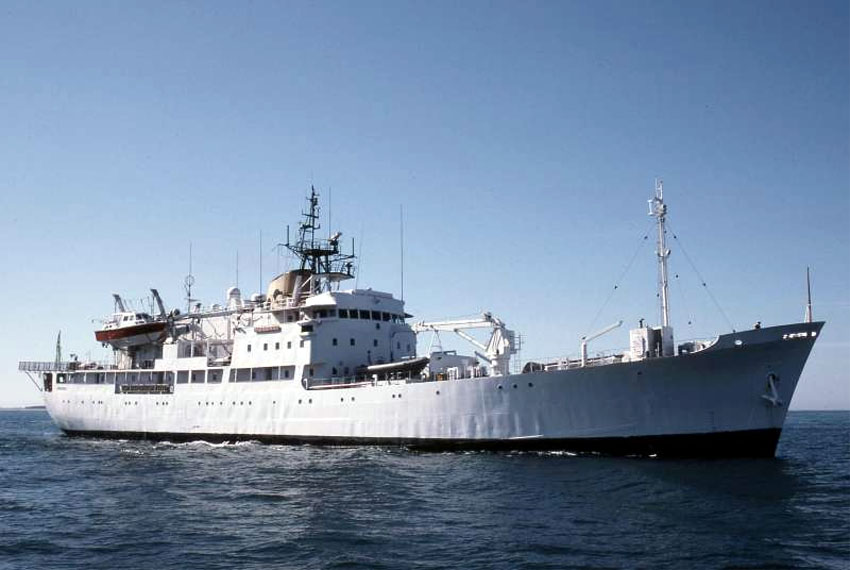
She
is seen here on this fine photograph
Photograph by & © Chris
Howell
During her naval service she was
known as the “Ghost of the Coast" for she quietly remapped most of
the New Zealand coastline and that included the Chatham, Campbell, Auckland
Islands, including the many sub-Antarctic Islands which are part of New
Zealand’s responsibility.
The HMNZS Monowai also acted as a resupply
vessel transporting stores and equipment to Campbell and other sub-Antarctic Islands, in addition she served as an “official
residence” for VIP’s and dignitaries at various Pacific
Island
conferences. Other tasks she was called on where such as the following; the
monitoring of Chinese missile splashdown tests, responding to Fijian military
coups and to assist in the evacuation of New Zealand
citizens, also participating in the ANZCAN cable route survey
and assisting in international searches for sea mounts and shoals. She carried
a helicopter aft and therefore undertook rescue and aid missions, saving the
lives of eight people during the New Zealand
to Tonga Yacht Regatta/Race. From her commissioning she served well for nine
years, but the HMNZS Monowai would be replaced in 1997 by the HMNZS Resolution
that was previously the USNS Tenacious.
Around 1980 the HMNZS Monowai was armed with
two 20mm Oerlikons for self-defence and then in 1982, she was fitted out to
carry a single Wasp helicopter. She continued around the coast of New Zealand
and proved to be very successful.
During her naval service she was known as the
“Ghost of the Coast" for she quietly remapped most of the New
Zealand coastline and that included the Chatham, Campbell, Auckland Islands,
including the many sub-Antarctic Islands which are part of New Zealand’s
responsibility.
The HMNZS Monowai also acted as a resupply
vessel transporting stores and equipment to Campbell and other sub-Antarctic Islands, in addition she served as an “official
residence” for VIP’s and dignitaries at various Pacific
Island
conferences. Other tasks she was called on where such as the following; the
monitoring of Chinese missile splashdown tests, responding to Fijian military
coups and to assist in the evacuation of New Zealand
citizens, also participating in the ANZCAN cable route survey
and assisting in international searches for sea mounts and shoals. She carried
a helicopter aft and therefore undertook rescue and aid missions, saving the
lives of eight people during the New Zealand
to Tonga Yacht Regatta/Race.
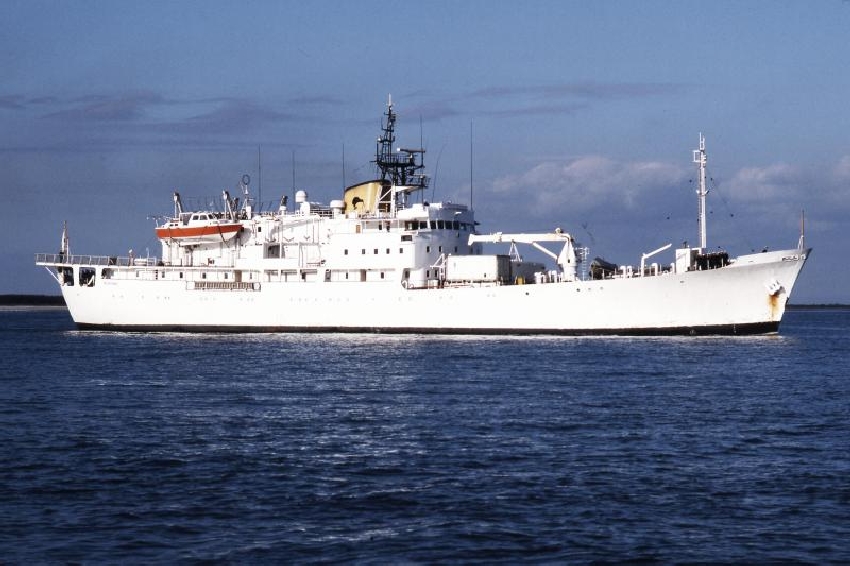
Hydrographic Survey Ship, the HMNZS
Monowai is seen departing Bluff in New Zealand
On
February 2, 1998 close to her final days with the New Zealand Navy
Photograph by & © Chris
Howell
From the day she first commenced
operations the HMNZS Monowai served well for nine years, but it was decided in
1997 that the HMNZS Monowai would be replaced in due course by the HMNZS
Resolution that was previously the USNS Tenacious.
On April 21, 1998 the Monowai was decommissioned and she was sold to British buyers, being the
“Hebridean Island Cruises” and
thus she headed once again to the United Kingdom
where she would be converted into cruise ship. However on March 28, 2000 the
Monowai had fire in the engine-room whilst she was berthed at Lowestoft awaiting her refit. Although the
fire was extinguished same day, the damage proved to be extensive.
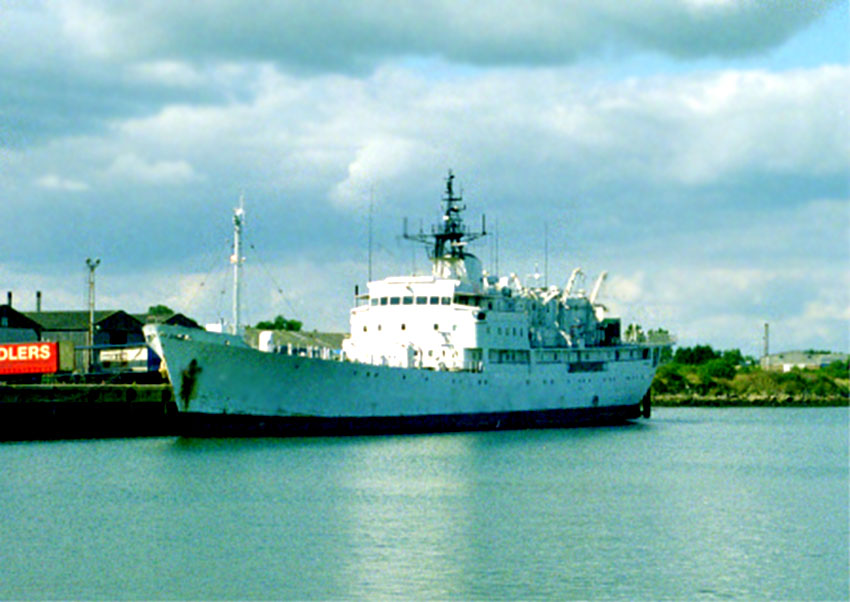
Here
we see the MV Monowai laid up at Lowestoft
after the engine room fire in 2000
Photographer unknown –
Please see Photo Notes at bottom of page
Her owners taking in
consideration the additional costs of repairs in the engine room, as well
realising that the ship was in fact unsuitable for the companies needs, thus
any idea of commencing the work was suspended, and in December 1998 she was
laid up a shut down at Lowestoft, remaining there until 2002.
During the years she was laid up in a
“Dead” State, with her engines completely shut down and the ship was
without power, etc, thus she was unable to sail under her own power, unless repairs
were made to her machinery. However, her owners decided to sell her in a
… “as is & where is” state, thus buyers knew that
she required to be towed. Then in 2002 the ex HMNZS Monowai and GMV Moana Roa
was sold to Spanish ship breakers.
In October 2002, she was towed bound for El
Puerto de Santa Maria,
Cadiz Spain.
However, she broke free whilst she was undertow in the English Channel but the
French Navy came to her recue and took her undertow
and took her to Brest. It was from
there tugs again took charge of her and towed her to Cadiz
where she was broken up in 2003.
Remembering
the Little, but a Fine & Popular Small Ship - GMV Moana Roa
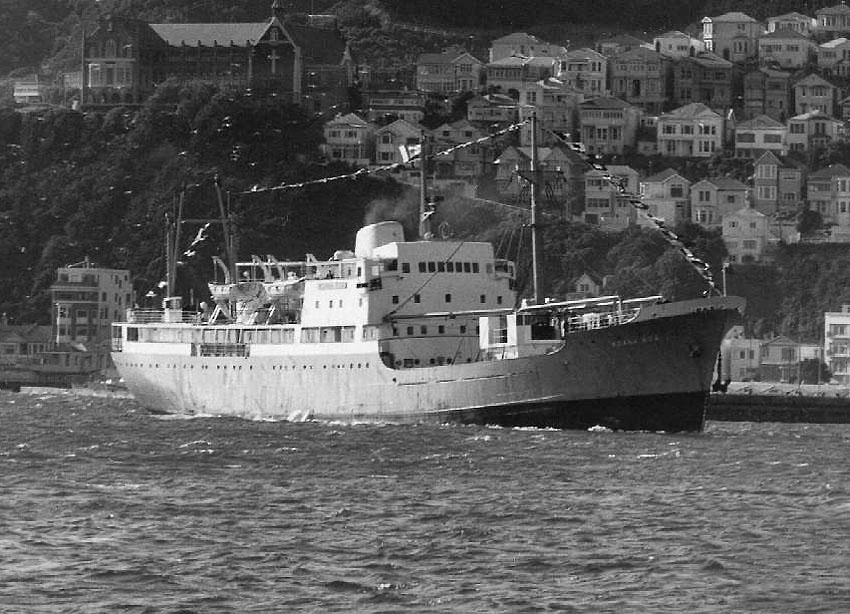
The
wonderful GMV Moana Roa arrives fully dressed in New Zealand’s
Capital, Wellington
****************************
“Blue Water Liners sailing to the distant
shores.
I watched them come, I watched them go and I watched them die.”
Visit
our ssMaritime Main INDEX
Where
you will discover well over 700 Classic Passenger & Passenger-Cargo Liners!
ssMaritime.com & ssMaritime.net
Where
the ships of the past make history & the 1914 built MV Doulos Story
Please
Note: ssmaritime
and associated sites are 100% non-commercial and the author seek’s no funding or favours of any shape or
form, never have and never will!
Photographs
on ssmaritime and associate pages are by the author or from the author’s
private collection. In addition there are some images that have been provided
by Shipping Companies and private photographers or collectors. Credit is given
to all contributors. However, there are some photographs provided to me without
details regarding the photographer/owner concerned. I hereby invite if owners
of these images would be so kind to make them-selves known to me (my email
address may be found on www.ssmaritime.comonly),
in order that due credit may be given.
ssMaritime is owned & © Copyright by Reuben
Goossens - All Rights Reserved


 ---
---












